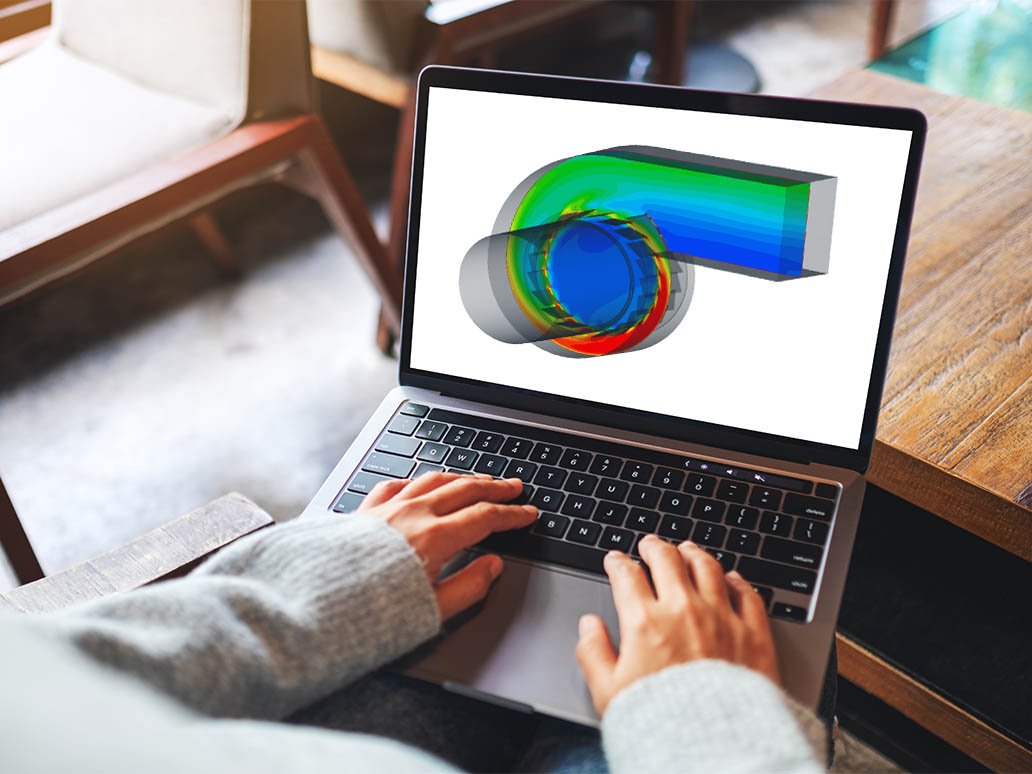Buildings today are modernizing to embrace the sustainability standards aligned with the distressing environmental conditions. Robust ventilation systems are therefore paramount to climate-forward building designs—be it offices, hotels, shopping malls, schools, factories, conference centers, residential and so on.
CFD, or Computational Fluid Dynamics is commonly used in the construction sector for HVAC system analysis and design optimization. CDF software can simulate and assess fluid flows and HVAC performance without actually installing or prototyping the HVAC system. As a result, engineers and architects can note critical issues and find their remedies to improve a building’s HVAC performance.
This article focuses on how CFD services for HVAC can enhance its performance and the various approaches toward optimizing HVAC components with CFD Simulation.
How does CFD Analysis help Improve HVAC Systems?

Scientists and engineers use Computational Fluid Dynamics (CFD) to study fluid flow and its behavior under the influence of surrounding conditions like temperature, pressure, etc.
CFD simulations allow engineers to visualize flow velocity, density, thermal impact, and chemical concentrations with the help of 3D images or animations. These results help engineers optimize designs and improve HVAC system performance.
CFD can be used to predict the performance of the HVAC design before installation or system modification to assess their success rates or numerous physical prototypes. This reduces cost and saves time.
CFD can also be an indispensable tool for analyzing existing HVAC system designs and providing detailed information on the fluid or gas flow within a specified area or occupied zone.
How CFD Improves HVAC Performance in Practical Application
Here are some places where CFD services can improve HVAC Systems with practical applications:
In passive ventilation
The passive ventilation strategy, also known as natural ventilation, uses natural phenomena such as wind flow and buoyancy to create pressure differences that cause changes in the air inside the building.
This requires special features such as envelope openings, heat storage boxes, and exhaust ducts to be implemented in the design.
CFD is a potent tool for predicting the behavior of passive ventilation systems, as it can accurately model special phenomena such as buoyancy due to differences in temperature and humidity.
It can also explain virtually all geometric features, allowing you to test and validate innovative solutions before prototyping or designing. Read more on Passive Cooling in Buildings.
In ventilation equipment
A forced ventilation strategy is required if the passive ventilation strategy is insufficient to meet the performance requirements. This is achieved by implementing a fan, blower, or compressor to create a pressure differential and accelerate changes in the air in the target space.
CFD provides excellent support for the design process of air transfer equipment. Engineers can predict pressure distribution, flow path, and velocity performance. They can then quickly test and compare design variations in a virtual environment.
In displacement ventilation
In traditional mixed ventilation strategies, a regulated air intake is located at the top of the room, resulting in faster flow rates. In contrast, the displacement ventilation strategy places the air intake near the floor and uses a relatively low flow rate.
Hot air generated by a resident or device rises to the ceiling by buoyancy (called a heat plume), which is compressed and removed from the room without recirculation.
A common use for this strategy is found in the classroom and office spaces because it provides improved air quality.
In jet fans
Jet fans are used to direct and increase flow in large spaces. Combined with CFD, engineers can strategically place inlets and outlets by studying optimal flow behavior that can be achieved under challenging conditions.
In thermal comfort
A domain wherein CFD simulation is mainly beneficial is evaluating code compliance for thermal comfort.
Unpleasant temperatures in indoor spaces can interfere with our general well-being and affect our ability to concentrate. For this reason, architects, interior designers, or HVAC engineers always consider thermal comfort.
HVAC design software and flow simulation make assessing and optimizing thermal comfort much easier to ensure the most comfortable indoor climate possible.
In some cases, indoor HVAC standards are clearly defined by regulations and codes. For example, from drafting and heating and cooling to pollution control and smoke extraction, building codes such as ASHRAE55 and ISO7730 describe the elements, levels, and requirements that must be met for each approval.
Some of these codes are based on fixed conditions, others change over time, or conditions change due to external factors such as radiation or the number of people entering or leaving the room, which affects radiant heat.
Simulation allows engineers to visualize and evaluate these HVAC factors and choose between steady-state simulation and transient simulation.
This ensures that the interior space with the HVAC design continues to provide sufficient comfort for the occupants, despite changes such as strong winds or changes in temperature due to sunlight.
Compliance with Codes and Standards
-
The Energy Performance of Buildings Directive (EPBD) was adopted in 2002 to enhance the electrical performance of buildings. As a part of this directive, the EN-15251 brought widespread changes created to specify necessities for indoor thermal comfort.
-
The American Society of Heating, Refrigerating and Air-Conditioning Engineers (ASHRAE) has posted the Standard 55 “Thermal Environment Conditions for Human Occupancy” since 1966. International bodies have also followed it, including ISO regulations and many other countries.
Sustainable Living with Mechartes CFD Services for HVAC
CFD Services and HVAC go hand in hand when designing the individual components and the system. Mechartes team of CFD experts, designers, and engineers has enabled several businesses to optimize their HVAC systems with our CFD services.
Mechartes has field experience in various CFD Services and HVAC systems domains, from data centers to outdoor thermal comfort. Contact us today for more info on our services and how we can help you.


 Share
Share  facebook
facebook